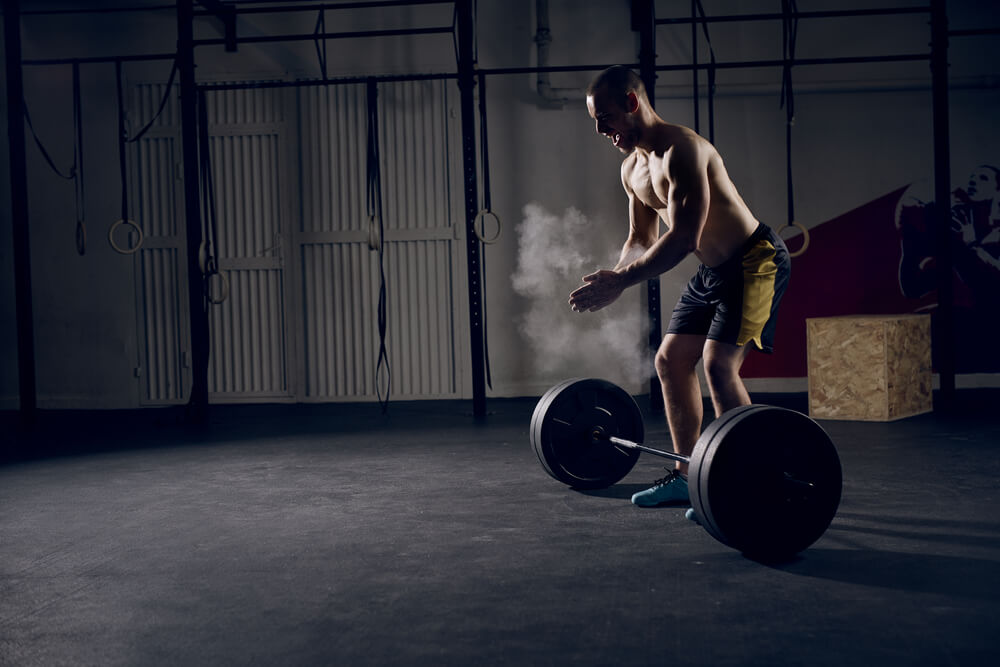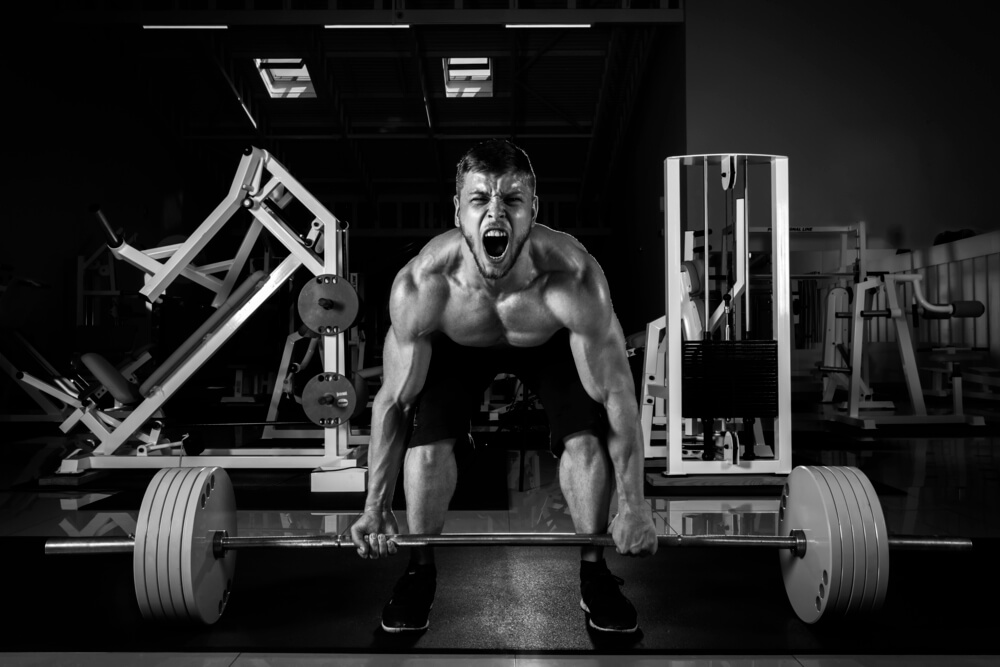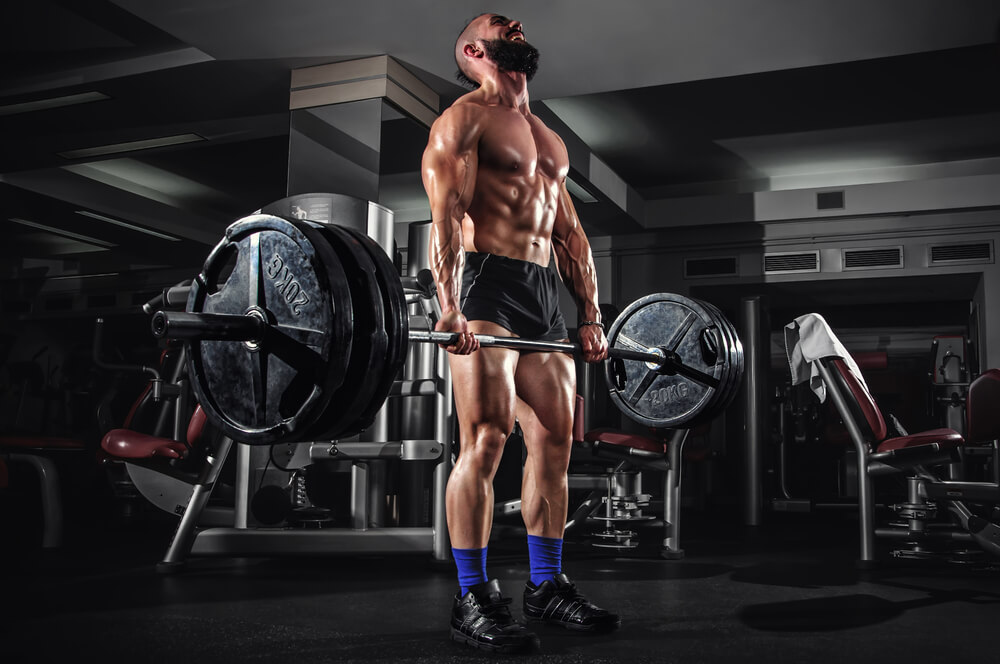
Want to build a better body? Of course, you do. Have you thought about building it using Olympic Lifting Program? Not sure where to start? Don’t worry. We have the info you need to succeed.
So you joined a gym two years ago and have been consistently going three or more times per week. Your simple diet plan is clean and correct, you keep increasing your strength and you’re happy with the way you look. But progress has stalled, at least in the mirror, and you need fresh ideas to add to your workouts.
Let’s face it: Deadlift, squat, and bench press every workout can get pretty stale, even with variants on those moves. Eventually, your body will not change any more than it already has. Olympic weightlifting is the key to unlocking your best physique.
Ever watched the lifters on TV during the Olympics?
First of all, they’re super strong. Those guys bench, squat and deadlift just like you and I (at double or triple the weight). They also train power movements like the clean and jerk and the snatch. As well, the physique of most of them (except for maybe the super heavyweights; more body mass equals more power) looks like an ancient Greek sculptor carved them out of marble.
How does it work?
With all these light weights being thrown around seemingly at random, how does this make you leaner, stronger and bigger?
Good question.
This is a great time for a quick lesson in exercise science.

The Science Of Muscles
Muscles are made up of groups of long, thin cells, bunches of which are called fibrils. Fibrils bunched together are called fibers. Fibers bunched together compose muscles. In order for muscles to move the skeleton, they are innervated and activated mostly by the brain at junctions on the surface of the muscle called motor units.
A motor unit is composed of a neuron (nerve cell) and all the muscle cells (grouped into fibers) that the nerve is attached to. The more nerves attached to one muscle group, the stronger the muscle is. Imagine it like a tug-of-war. If one person is pulling a rope attached to eight people who are also pulling against him, the person on his or her own would easily lose, meaning the muscular contraction would be weak. If there are six people pulling against the same eight, the match would be much more even and the contraction would be stronger.
Muscles are grouped into three types. Type I, or slow-twitch muscle fiber, helps with endurance. Marathoners and long distance swimmers tend to have much more developed type I muscle fiber than the other two types.
Type IIA muscle fiber is the first of the two subgroups of type II muscle fiber. The other is type IIX. Type IIA and IIX muscle fibers are the muscles that help you sprint, jump high and lift weights. They have the greatest potential for growth and for strength. They grow much more quickly than type I muscle fiber. To activate type II muscle fibers, you need to either lift heavy (55% or more of the most weight you can lift once) or lift fast.
Here’s the takeaway: Lifting heavy is great. No doubt! But, your body is a very efficient machine and will figure out how it can limit its’ energy expenditure. Simply put, you will hit a plateau. You won’t get any stronger or any bigger past a certain point if you do not change it up.
Yeah, you can change up the exercises you do and your set and rep schemes and that will help. Still another stimulus for change is to move fast. If you ever look at a sprinter’s body or an Olympic lifter’s body, it is clear that all the training each of those athletes do have a positive impact on the human body.
This Is The Size Principle
When studying exercise science in college, one of the first things learned is the size principle. The size principle, simply put, means that the smallest motor units are activated first while lifting, and the larger ones later. Essentially, all the type I fiber will be activated before the type II even knows you are lifting.
What it really comes down to is: The more type II fiber that gets activated, the more muscle you’ll build and the more fat you’ll burn. Basically, if you’re not moving super fast or lifting heavy, you will not activate any type II muscle fibers. This is a problem when you want to get bigger and/or leaner.
Lifting heavy means lifting 55% or more of your one-rep max, and really you ideally want to be in the 60 to 85% zone for sets of six reps down to about three, respective to the percentages listed. Lifting fast means accelerating a lighter load, although large loads can be accelerated too.
To start out, lifting about 35% of your one-rep max on a power move (e.g. clean, push press) will help you get the technique down before you move on to heavier weights. The idea with any and all of the power moves is to do them as fast as you can with flawless technique, as the limiting factor in most attempts to get higher weight while training is a technical error versus a strength limitation. Not only that but lifting with
Not only that but lifting with technique that is flawed in a major way will almost always result in an injury.

Start Your Olympic Lifting Program
All of this science may leave you wondering where to start and how to go about it. The moves that need to be learned before the basic moves (that will follow) you should already know. They are the deadlift, squat and overhead press.
Once you have mastered those moves, unless you’re working with a strength coach who has collegiate experience, I always advise finding a good USAW-Certified Olympic weightlifting coach and working with them to at least learn the basics. And, no, CrossFit instructors do not count and should actually be avoided at all costs.
Basics include the clean pull, snatch pull, Hackey pull, front squat, push press, overhead squat and drop snatch. All of those moves help prepare you for the bigger, more complex moves: The clean and jerk and snatch.
Benefits Of Olympic Weightlifting
We already discussed the size principle. But, just as a reminder, the speed at which these moves are done recruits the motor units including the type II muscle fibers, the ones that help you jump high and run fast, and have the greatest potential for growth and strength. And as such, when muscles get bigger and/or more efficient (both benefits of Olympic lifting), your body’s basal metabolic rate, or BMR, gets higher.
Your BMR is the amount of calories your body burns in a 24-hour period. Weight loss (fat loss) is achieved by burning more calories than you take in, so more calories burned without changing anything else except the size of your muscles is a good thing.
Another major benefit is the huge spike in blood hormone levels your body gets from lifting a heavy load fast, the most prominent one being testosterone. Testosterone is an anabolic hormone.
What does that mean?
It builds things.
Specifically, it assists in building muscles along with insulin-like growth factor I (IGF-I, an anabolic hormone), and human growth hormone (HGH). HGH naturally circulates in your blood and helps you recover; A-rod took extra so the extra testosterone he was taking did not damage his kidneys permanently. The increases in blood levels of these hormones help boost the body’s rate of protein synthesis (muscle is built faster) and decreases muscle catabolism (prevents losses of the gains you just made during your lift).
The third major benefit of Olympic weightlifting sessions is how metabolic they are. Doing a heavy set of cleans or even clean pulls for more than three to five reps is, frankly, exhausting. I’d be really impressed if you did a set of five cleans at around 60% of your clean one-rep max and were not breathing hard.
As you well know, something that makes you breathe harder and gets your heart beating faster is going to burn more calories than something that does not. The more calories burnt, the more fat lost and the more your abs look like a street map of New York City (for those of you who do not know, NYC’s streets are basically a big grid).

A Sample Olympic Lifting Program
Okay, so now you have all the facts and knowledge you need to put Olympic lifts into your workouts.
The big question is, where do they go?
Most Olympic lifters train only these moves and only do assistance lifts (the ones you already do) when they have a weakness in a particular area. However, because you do all the assistance lifts already, chances are that if your numbers for the Olympic lifts don’t budge for a while it’s a technique error. In that case, you should keep that coach’s number handy.
What follows is a sample four-day, full-body split, divided into two Olympic lifting days with other pulls, and two bench press and squat days. Days 1 and 3 are Olympics and pulls. Days 2 and 4 are bench and squat. You’ll notice there is some sort of Olympic progression in every workout, but the emphasis on the Olympics is on Days 1 and 3.
Directions: Do all sets of one move before progressing to the next. Exercises are written as SETSxREPS.
Day 1
Plank* 2 minutes
Clean 8×2
Deadlift 4×5
Romanian Deadlift (RDL) 3×6
Pull-Up 4xAs Many Reps As Possible (AMRAP)
DB Row 4×6
Biceps (your choice of exercise) 3×10
Day 2
Plank* 2 minutes
Push Press 4×3
Front Squat 4×5
Bulgarian Split Squat 4×5 each side
Bench Press 4×5
Close Grip Incline Press 4×5
DB Overhead Press 3×5
Triceps (your choice of exercise) 3×10
Day 3
Plank* 2 minutes
Clean Pull 4×3
Hang Clean 4×3
Sumo Deadlift 4×5
Barbell Good Morning 4×6
Bent-Over Row 4×6
Weighted Chin-Up 3xAMRAP, minimum 3
Biceps (your choice of exercise) 3×10
Day 4
Plank* 2 minutes
Drop Snatch 4×3
Back Squat 4×5
Walking Lunge 4×5 each side
DB Incline Press 4×5
Close-Grip Bench Press 4×5
BB Overhead press 4×5
Triceps (your choice of exercise) 3×10
*Try to increase the hold by 15 seconds every two weeks or so. The goal is to be able to hold for five minutes without taking a break.
The only question that I can think of anyone asking is why such an emphasis on the plank?
The answer is that posture, meaning a straight back with shoulder blades pulled down and back, is the single most important thing when doing any exercise, and especially so when moving as fast as an Olympic lift is supposed to be.
Conclusion
So there you have it. Now you know why Olympic lifting leads you to having a better body, how to learn it and where to fit it into your workouts.
Give it at least 12 to 16 weeks before you start to see changes.
Why?
Simple, because mastering the lifts will be the hardest part in the beginning. In fact, to most people, I recommend a fifth day of lifting in that 12 to 16-week timeframe that is focused solely on perfecting the technique of the Olympic lifts, meaning do the lifts and their progressions with light weight and make sure that your form is as close to perfect as possible.
Your cell phone camera can be useful in taking video and comparing it to a world-class lifter for form. After that, be prepared to receive more attention and compliments than ever before, as well as being the only guy in your basketball league who can dunk (or come close).
Happy lifting!
By Michael Schletter, CSCS*D, NSCA-CPT*D
Latest posts by Terry M (see all)
- Garage Gyms - Aug 1, 2018
- Kettlebells – Why They Should Be Added To Your Routine. - Jul 24, 2018
- Weight Belts: What Are They Really For? - May 31, 2018










Great plan! I’m starting today!!! how much rest time do you recommend in between sets and then each move?
Hey Renee 🙂
I would recommend taking 2-3 minutes in between sets! Hope this helps you out…
Terry Asher
[…] you want to get into Olympic lifting, for example, a conventional deadlift will have the most carryover. Let’s say you want a pair of […]
how heavy should each rep be?
Is this program good for fat loss?
is this program good for weight loss?